News
2023.05.31
Columns
Mino Ware: Pottery Boasting a 50 Persent Domestic Market Share
Mino ware (Mino-yaki) is a general term for ceramics produced in the Tono region of southern Gifu Prefecture, Japan. It is the largest ceramic production area in Japan, and its history goes back more than 1,300 years. Mino ware is known for its diverse designs and ease of use, and is popular both in Japan and overseas. In this column, we will introduce the history and characteristics of Mino ware.
Table of Contents
History: 1300 years of pottery production
Kofun Period
Mino ware has a long history, dating back to the Kofun period over 1300 years ago. The beginning of Mino ware is “Sue ware” introduced from the Korean Peninsula. Sue ware is unglazed pottery that is shaped on a potter’s wheel and fired in an anagama kiln at a temperature of 1,000 to 1,200 degrees. The Tono region has gentle hills and is easy to dig, so anagama kilns were built in many places.
Heian period
In place of sue ware, ash-glazed pottery began to be made. Because it is more water resistant than Sue ware, it was produced as tableware and storage containers, and was used by aristocrats, temples, and shrines. Its popularity is not limited to the Tono region, but spreads throughout the country.
Kamakura Period
Yama-chawan (unglazed bowl) appeared and became widely used by the common people. During the Kamakura period, the tea ceremony flourished, and Mino ware was treasured as a tea utensil.
Azuchi-Momoyama Period
Oribe ware, characterized by its bright colors and free design, was created by Oribe Furuta, a master of the tea ceremony. Oribe ware became popular at tea ceremonies at the time, and became one of the typical Mino ware.
Edo Period
In addition to tea ceremony utensils, daily miscellaneous utensils began to be mass-produced. In addition, new techniques such as overglaze painting and dyeing, in which patterns are drawn with paints made mainly of cobalt, were developed, and the variety of Mino ware became more and more abundant.
Meiji Era
Western culture came to Japan, and the influence of the West can be seen in the design of Mino ware. In addition, with the advent of electric potter’s wheel and coal kiln, industrialization progressed and mass production became possible in a short time. As for painting, techniques for mass-producing beautiful patterns without a skilled painter (stencil printing, copper plate transfer, etc.) became popular and became the mainstream of sometsuke porcelain. In addition, imports and exports flourished, and Mino ware received an excellent reputation overseas.
After the Showa Era
The production volume now accounts for 50% of the domestic market share.
Features: A wide variety of types
It is said that the characteristic of Mino ware is that it has no characteristics. This is because, while other production areas have distinct characteristics, Mino ware produces a wide variety of pottery, so it is difficult to generalize.
Then, what kind of Mino ware is there? Here are some of the most famous ones.
■Setoguro
It is a pottery that develops a black color when it is pulled out of the kiln while it is being fired and allowed to cool rapidly.
■Kizeto
It is a pottery that uses a light yellowish brown glaze and is characterized by bright and gorgeous colors.
■Shino ware (Shino yaki)
It is said to be the first white pottery created by the Japanese. It is characterized by delicate hues, such as blue and green colors applied to white pottery.
■Oribe ware (Oribe yaki)
It is a pottery with a strong unique shape and pattern made with a free idea that is not bound by preconceived notions. It features bright colors and free design.
In addition, 15 types of Mino ware, Kaiyu (ash glaze), Tenmoku, Ofukei, Sometsuke, Akae, Seiji (celadon), Tetsuyu (iron glaze), Kohiki, Ameyu, Mino Iga, and Mino Karatsu are designated as traditional crafts by the Minister of Economy, Trade and Industry. You may understand that Mino ware has such a wide varieties from the number that there are 15 types of Mino ware.
Conclusion
Mino ware is a traditional Japanese craft and a ceramic that represents Japanese culture. Its appeal lies in its versatility and ease of use. There are many different types of Mino ware, each with their own unique designs and colors. It is also durable and easy to use, making it perfect for everyday use. Mino ware is loved both at home and abroad for its beauty and ease of use.
Imoto Sangyo handles a wide variety of Japanese ceramics and pottery, including Mino ware. For more information, please see the “Goods &Cases” page.
Category
Archive

